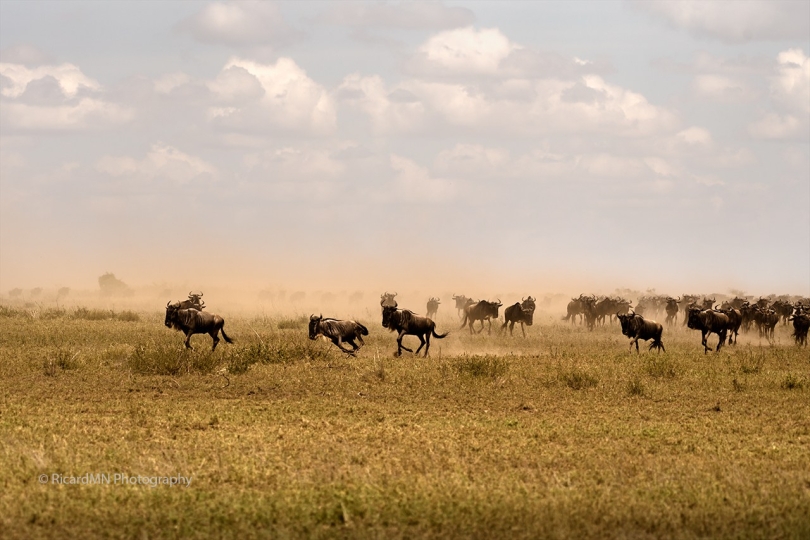
© RicardMN Photography
Herd of elephants under a tree in Serengeti National Park, Tanzania.
The African bush elephant (Loxodonta africana), also known as the African savanna elephant, is the larger of the two species of African Elephants. Both elephants, previously classified as exactly the same species, now prove different based from recent preliminary evidence which re-classifies the African forest elephant as a separate and distinct species (although this status is not conclusively accepted due to concerns over conservation strategies until the re-classification is formalized).
The African bush elephant has many distinctive features that sets it apart from the forest elephant. The bush elephant is much larger in height and weight, while the forest elephant has rounder ears and their trunk tends to be more hairy. The bush elephant has few predators, but still remains to be labeled an endangered species, mostly because of poaching. These elephants are known for being hunted for their tusks, ears, feet, and meat, so the population of bush elephants in the world have been increasingly declining. Their roaming has been limited to only specific areas, since they have been known for destruction of crops and landscape in certain areas. However they still travel in herds, with females being the primary leaders.
The African bush elephant is a very active and social mammal, since they are constantly on the move in search of food. Males often fight with each other during mating season, however they are considered to be very loving and caring toward relatives. Bush elephants also have strong social bonds, and when their herds are faced with danger, they tend to form a close, protective circle around the young calves. The elephants also tend to use their trunks to engage in physical greetings and behaviors.
The dramatic decline of the African bush elephant has resulted in various legal protections taking place in several states of Africa. Census reports show between the years of 2007 and 2014 there has been a decrease of 30% in the elephant’s population. The current rate at which the population is declining, leaves researchers to believe every year the African bush elephant will decline by 8%.
The Serengeti National Park is a Tanzanian national park in the Serengeti ecosystem in the Mara and Simiyu regions.
The park covers 14,750 square kilometres (5,700 sq mi) of grassland plains, savanna, riverine forest, and woodlands. The park lies in northwestern Tanzania, bordered to the north by the Kenyan border, where it is continuous with the Maasai Mara National Reserve. To the southeast of the park is the Ngorongoro Conservation Area, to the southwest lies Maswa Game Reserve, to the west are the Ikorongo and Grumeti Game Reserves, and to the northeast and east lies the Loliondo Game Control Area. Together, these areas form the larger Serengeti ecosystem.
The park is worldwide known for its abundance of wildlife and high biodiversity.
The park was the location of filming for The Grassland Landscape Of Planet Serengeti along with Masai Mara. (Description from Wikipedia)
Canvas, framed, acrylic and metal prints / Art prints / Greeting cards / Phone cases / Throw pillows
RicardMN Photograpy’s Facebook Page – RicardMN Photography’s Pinterest

